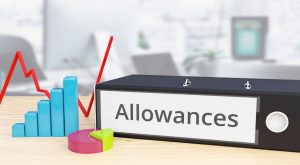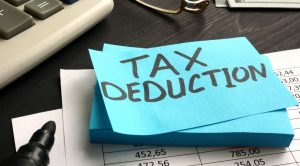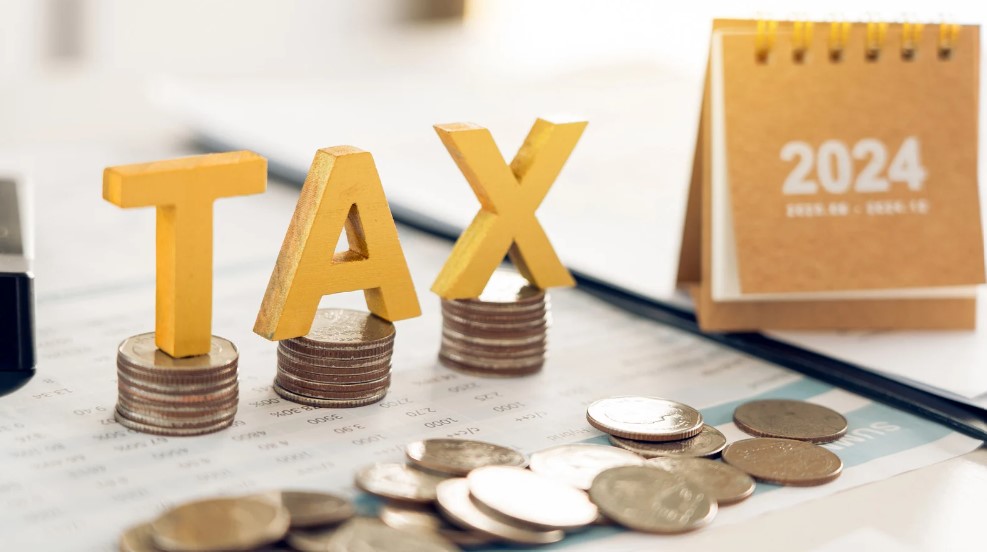Are you wondering how much you can earn before paying tax each month in the UK? Understanding your tax obligations can be daunting, especially when income, allowances, and tax brackets come into play. Whether you’re just entering the workforce or adjusting your earnings, it’s essential to understand how much you can earn before you begin paying taxes.
In this guide, we will break down how personal allowances, tax thresholds, and other factors affect your monthly income and help you navigate the UK’s tax system.
How Much Can You Earn Before Paying Tax Per Month in UK?
Understanding the UK Personal Allowance
What is the personal allowance?
In the UK, the personal allowance refers to the amount of income you can earn before paying any income tax. For the 2023/2024 tax year, the standard personal allowance is £12,570 annually. This allowance is crucial because it essentially means that the first £12,570 of your income is entirely tax-free.
How does personal allowance impact tax-free earnings?
If you’re paid monthly, the personal allowance breaks down into £1,047.50 per month (£12,570 ÷ 12 months). This means you can earn up to this amount each month before any income tax is applied. However, the personal allowance starts to taper off for individuals earning over £100,000 annually, reducing by £1 for every £2 earned above that threshold.
Once your income reaches £125,140 or more, your personal allowance is completely eliminated, meaning you will pay tax on every pound gained.

Monthly Breakdown of Tax-Free Earnings
How do you calculate monthly tax-free earnings?
Understanding how much you can earn monthly without paying tax is simple once you know your personal allowance. As mentioned, the standard allowance for the 2023/2024 tax year is £12,570, which gives a monthly tax-free earnings figure of £1,047.50.
Here’s a simple calculation:
- Personal allowance (yearly): £12,570
- Monthly tax-free earnings: £1,047.50
If you stay below this figure, you won’t pay income tax. However, once you exceed this limit, income tax is applied based on the applicable tax brackets.
Factors influencing monthly tax-free earnings
Various factors affect how much of your income remains tax-free. For instance, if you’re entitled to certain tax reliefs or allowances (such as the Blind Person’s Allowance), this amount could be higher. On the other hand, if you earn over £100,000, your personal allowance will decrease accordingly, as previously mentioned.
Tax Brackets and Rates in the UK
The UK operates a progressive income tax system, meaning that as your income increases, so do your tax obligations. Here’s an overview of the tax rates and brackets for the 2023/2024 tax year:
| Income Range | Tax Rate |
| Up to £12,570 | 0% (Personal Allowance) |
| £12,571 to £50,270 | 20% (Basic Rate) |
| £50,271 to £125,140 | 40% (Higher Rate) |
| Above £125,140 | 45% (Additional Rate) |
How does this translate to monthly income?
Let’s break this down into monthly figures:
- Basic Rate: If you earn between £1,047.51 and £4,189.17 per month, you’ll pay 20% income tax on earnings above your personal allowance.
- Higher Rate: For those earning between £4,189.18 and £10,428.33 per month, a 40% tax rate applies to any amount over £50,270 annually.
- Additional Rate: High earners making over £10,428.33 per month will be subject to a 45% tax rate on earnings exceeding £125,140 per year.
The progressive nature of the UK tax system ensures that only a portion of your earnings above each threshold is taxed at a higher rate.

National Insurance Contributions and Their Role
What are National Insurance Contributions (NICs)?
In addition to income tax, National Insurance Contributions (NICs) are another critical deduction from your earnings. NICs help fund state benefits such as the NHS, state pensions, and unemployment benefits.
How much do you pay in National Insurance?
Here’s a breakdown of the National Insurance rates for the 2023/2024 tax year:
- Class 1 (employed): If you earn between £1,048 and £4,189 a month, you will pay 12% in National Insurance contributions. If you earn more than £4,189 per month, you will pay 2% on anything above this threshold.
For example, if your monthly salary is £3,000, you will pay National Insurance on £1,952 (£3,000 – £1,048) at a rate of 12%, which works out to £234.24.
The impact on monthly take-home income
Even if you stay under the income tax threshold, National Insurance contributions will still apply once your earnings exceed £1,048 per month. This means that while your income may remain tax-free under the personal allowance, you may still see deductions for National Insurance.
Factors That Affect How Much Tax You Pay
Additional income
If you earn money from sources other than your primary job, such as rental income, dividends, or savings interest, these could push you into a higher tax bracket. While savings interest up to £1,000 (for basic-rate taxpayers) or £500 (for higher-rate taxpayers) is tax-free under the Personal Savings Allowance, other forms of income may be fully taxable.
Tax reliefs and allowances
Specific individuals are entitled to additional reliefs or allowances. For example, if you are eligible for the Marriage Allowance, you can transfer £1,260 of your personal allowance to your spouse, potentially reducing their tax liability by up to £252 annually. Similarly, if you’re entitled to the Blind Person’s Allowance, you could receive an extra £2,870 in tax-free earnings.

The Impact of Age and Employment Status
Pensioners
If you’re over the state pension age, you no longer need to pay National Insurance, although income tax still applies to any earnings or pensions you receive. Pension income, including the state pension, is taxable, but pensioners have the same personal allowance as working-age individuals.
Self-employed individuals
For the self-employed, taxes are calculated differently through the Self-Assessment system. In addition to income tax, self-employed individuals must pay Class 2 and Class 4 National Insurance. Class 2 NICs are a flat rate of £3.45 per week for anyone earning over £6,725 annually, while Class 4 NICs are calculated at 9% on profits between £12,570 and £50,270 and 2% on earnings above this amount.
How to Maximise Tax-Free Income?
Tax reliefs and allowances
One of the most effective ways to maximise your tax-free income is to make use of available tax reliefs. For example, contributing to a pension scheme can reduce your taxable income, thanks to pension tax relief. Similarly, investing in ISAs (Individual Savings Accounts) allows you to earn interest, dividends, and capital gains tax-free up to a set annual limit.
Utilising workplace schemes
Many employers offer salary sacrifice schemes, allowing you to reduce your taxable salary in exchange for benefits like additional pension contributions, childcare vouchers, or cycle-to-work schemes. By reducing your taxable compensation, you can lower your tax liability and, in some cases, reduce the National Insurance you pay.
What Happens When You Earn Above the Threshold?
How tax is deducted?
When your monthly earnings exceed the personal allowance, your employer automatically deducts income tax through the Pay As You Earn (PAYE) system. The PAYE system ensures that tax is collected directly from your wages before you receive them, so you don’t need to worry about paying it yourself.
Real examples of post-tax earnings
Let’s say you earn £3,500 per month. After applying the personal allowance of £1,047.50, you’re left with £2,452.50, which is taxable at 20%. This means your monthly tax bill would be £490.50, leaving you with £3,009.50 before any other deductions like National Insurance.

Conclusion
Understanding how much you can earn before paying tax in the UK is vital for anyone looking to maximise their take-home pay. By staying informed about personal allowances, tax brackets, and National Insurance contributions, you can better plan your finances and take advantage of reliefs that may be available to you.
Whether you’re employed, self-employed, or approaching retirement, knowing these key figures will ensure you’re prepared for what to expect when it comes to your monthly earnings and tax obligations.
Frequently Asked Questions (FAQs)
What is the current UK personal allowance?
For the 2023/2024 tax year, the personal allowance is £12,570, meaning you can earn up to this amount annually before paying any income tax.
Do I need to pay tax on all types of income?
Not all income is taxable. For instance, the first £1,000 of savings interest is tax-free for basic-rate taxpayers under the Personal Savings Allowance, and ISAs allow tax-free interest and gains.
How are tax codes assigned in the UK?
Your tax code is assigned based on your personal allowance and other factors, such as income from other jobs or benefits. The tax code tells your employer how much tax-free income you’re entitled to each year.
How much National Insurance do I pay monthly?
If you’re employed and earn between £1,048 and £4,189 monthly, you will pay 12% National Insurance on earnings over £1,048. Above £4,189, you’ll pay 2%.
Can I increase my tax-free allowance?
Yes, you can improve it by claiming certain reliefs, such as the Marriage Allowance or Blind Person’s Allowance.
Do self-employed people have different tax thresholds?
Self-employed individuals have the same personal allowance as employed individuals but pay different National Insurance rates.
What are the current tax bands in the UK?
The tax bands for the 2023/2024 tax year are: 0% up to £12,570 (personal allowance), 20% on income from £12,571 to £50,270, 40% on income between £50,271 and £125,140, and 45% on income over £125,140.

